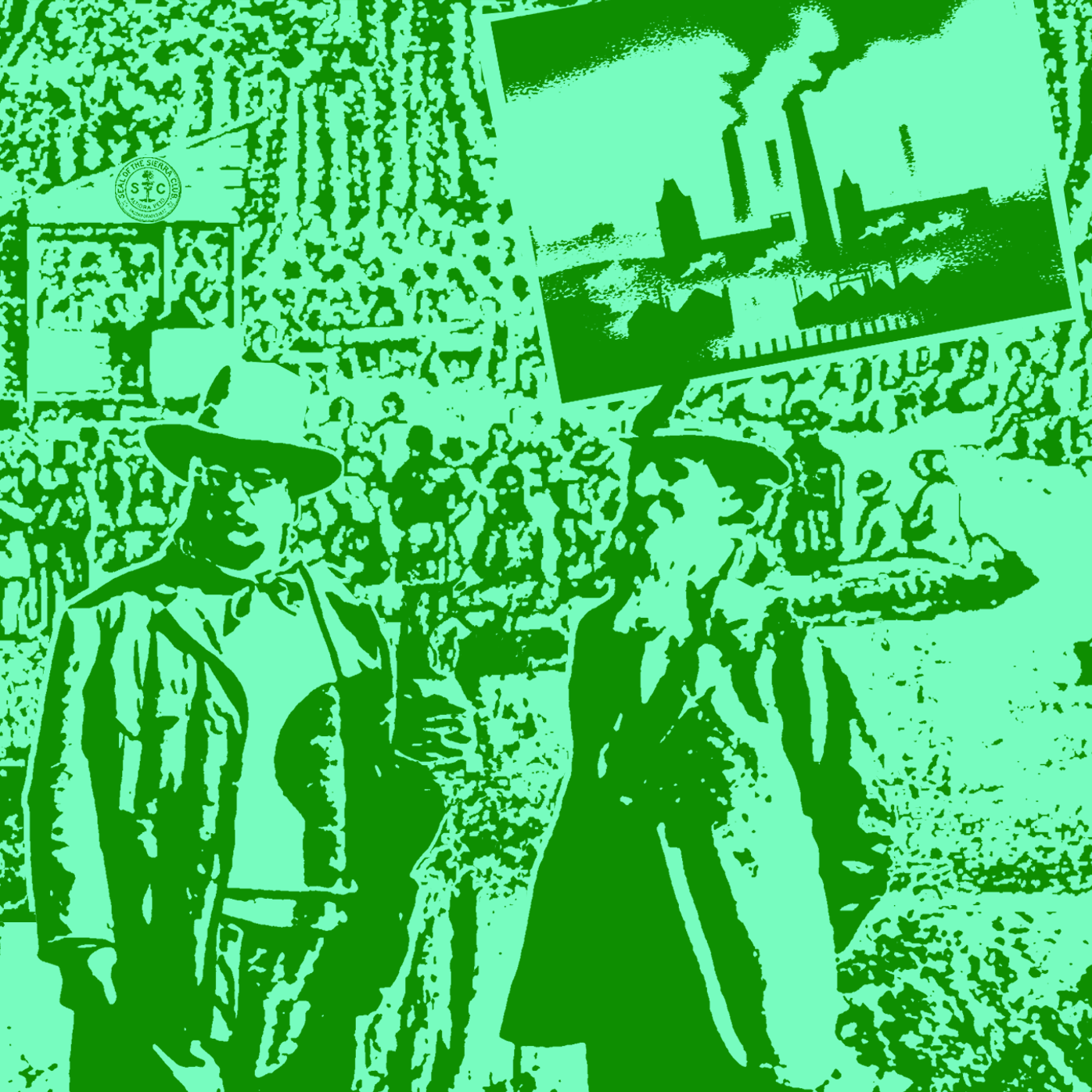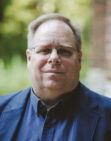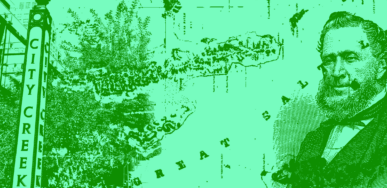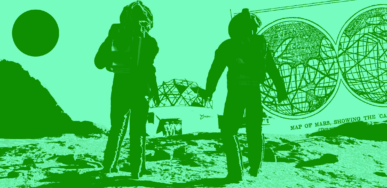
Church in the Wilderness
Martien Halvorson-Taylor [00:00:00] I'm Martien Halvorson-Taylor.
Kurtis Schaeffer [00:00:02] I'm Kurtis Schaeffer.
Martien Halvorson-Taylor [00:00:04] And this is Sacred and Profane. If you're new to the show, this episode is part of our season between Heaven and Earth, which focuses on climate change and religions in the United States.
Kurtis Schaeffer [00:00:18] On our last episode, we headed to Sedona, Arizona, to explore how New Age spiritual practices understand the landscape. We even took a hike to find some of Sedona's famed energy vortexes ourselves. Chances are that when you head out into nature, you're hoping to find something similar. Whether we're going for a stroll in our local parks or hiking deep in the backcountry, we're looking for a sense of restoration and connection with the environment.
Martien Halvorson-Taylor [00:00:47] There's a long American intellectual tradition around that connection to the land, one that has deep ties to Protestant Christian theology, and the U.S.’s strong environmental movement. To find out more about it, we called Evan Berry.
Evan Berry [00:01:05] Hi, I'm Evan Berry. I'm an associate professor of Environmental Humanities at the School for Historical, Philosophical, and Religious Studies at Arizona State University. These are not just ideas about the natural world that exist in books. They're also things that show up in people's practices and everyday lives. I like to go backpacking. Some of the backpacking I do is in areas where the long distance through hikers go on the Pacific Crest Trail and on the Continental Divide trail. And if you talk to people like that, they're very much on a spiritual journey, borrowing on the same kinds of language that dates back to romanticism and transcendentalism, to talk about the sort of moral transformation of the individual in the adventure afforded by the outdoors.
Kurtis Schaeffer [00:02:01] There's also a long history of nature writing that is deeply influenced by Protestant theology.
Evan Berry [00:02:07] I think anyone who's encountered anything like a history of the environmental movement will have seen the claim that someone like John Muir or Thoreau have these roots in transcendentalism and that that's a Protestant variation of a particular type. So that that connection is sort of out there in the way we talk about what the environmental movement is and where it started. But then, when you start to get into the actual language that people use in the early decades of the movement, it's not just that they're borrowing on a sort of gospel language that was publicly available. The thinking in the formative generation of the environmental movement is built around Christian concepts. The basic takeaway is the idea that nature is created by God, that it is good, that human beings are fallible—they’re a fallen, sinful kind of creature, and that our relationship with nature is one through which we can reconcile ourselves to God, by experiencing the beauty and grandeur of His creation. So it's not just that creation is nice and that it should be protected, but that specifically it has this value for people who want to enjoy it and use it.
Martien Halvorson-Taylor [00:03:35] Certainly there are people who are out enjoying the natural world without thinking about sin and redemption. But these foundational ideas of what nature is—something that exists apart from humans and that is threatened by humans—persist and are at their heart indebted to Christian thinking. And this theology has carried forward even into places that might seem profoundly secular, like national parks.
Evan Berry [00:04:06] Yeah, I mean, the national park has a really old history dating back to, like, hunting preserves for European kings and aristocracy. So, the legal precedent for national parks has this interesting blood right of kings heritage to it. But the National Parks project in the United States that began in the latter decades of the 19th century and really expanded in the early decades of the 20th century, it's obviously a democratic framework. And so the idea there is that blocks of land can be set aside for the enjoyment of people. So it's a democratization of that same principle, that those leases were to preserve sites for the memory and enjoyment of future generations. But they were also very clearly designed to do particular work on the people who would enjoy them again in the future. So the idea was that national parks could be part of forging the spirit of the American people for generations to come. And that that spirit, I say theological, a) because the language of creation is often present in the founding documents of the national Park system, but also because this idea that the boundaries put around those places is a kind of purification. What was called “nature” or “wilderness” had always been people. There were not places that were unsullied by human activity, and putting legal markers around the boundaries doesn't change the fact that humans continue to have impacts on those places. But it's a sort of ritual demarcation of what is natural and God given. And what is human and artificial.
Kurtis Schaeffer [00:06:01] So an important consequence is pushing people out of the parks who lived in those boundaries.
Martien Halvorson-Taylor [00:06:07] That's right. You may recall we did an episode in our first season on this very topic. We spoke with Shane Doyle, a scholar and member of the Crow tribe, about how his ancestors were excluded from what is now Yellowstone National Park.
Evan Berry [00:06:23] The National Park System, like federal lands policies in general, are completely predicated on the displacement and dispossession of native lands. All national parks were once the ancestral territories and, and still are, the ancestral territories of native people. So every single park that there is required policy measures to prevent indigenous peoples that resided there from entering and accessing those sites. I mean, one of the tropes that appears frequently in 19th-century nature writing is the Garden of Eden. And so this question of sort of, like, who resides in the garden, and is it uninhabited is… all lingers over the Genesis text. In the same way this account of the unsullied, untrammeled, uninhabited, unpopulated Garden of Eden directly preserved from the moment of creation…I mean, this… these are languages that 19th century writers frequently employed. But then in the next paragraph, they'll write about the negative impacts that native people and their sheep… thinking about how this is the original state of creation and not seeing that in fact there are people using and living on that land.
Martien Halvorson-Taylor [00:07:53] And all this has important implications for climate change. As successful as America's national park system has been at preserving land from development, it's also created an intensely individual relationship with the land. The land isn't preserved because of communal need to manage resources on which we all depend. But for its ability to inspire an individual spiritual connection, that's also an idea with deep roots in Protestant theology, especially traditions that center a personal relationship with God as key to salvation.
Kurtis Schaeffer [00:08:35] Evans says this individual relationship with the parks has been magnified by car travel. Cars allow more people to access national parks, but they also allow individuals to select exactly what they want to see and experience.
Evan Berry [00:08:51] The thing that interests me about cars is how they transform the relationship of the body of the person with the place that body is located. One of the underlying themes I'm trying to grapple with is the ways that the Protestant Christian mechanisms for understanding and connecting with the natural world are also how we came to have such highly individualistic, private modes of thinking about ecology and the environment. So the car is a really important technology where these, the desire for private experiences of natural beauty meets a technological innovation that then radicalizes that; so that the road trip then becomes one of the defining cultural characteristics of the United States in the 20th century.
Martien Halvorson-Taylor [00:09:45] Yeah. So it's a new, it's a different mode of pilgrimage and one that's far less communal, except for if you're stuck in a traffic jam in Yellowstone.
Kurtis Schaeffer [00:09:58] Once we acknowledge the religious roots of our understanding of nature, the question becomes what do we do about it? Is it something that we can change?
Evan Berry [00:10:08] I mean, I grew up in the Pacific Northwest and there is a long-standing trope that it's the great unchurched, right, that it's a… it's, it's the hotbed of being spiritual but not religious, and that that has something to do with nature and the environment and scenic beauty in the region. That's sort of a story that people in the Northwest tell about themselves. And it's also a story that people in other parts of the country tell about the Pacific Northwest. But I think the, the archives that I encountered and people I talk to, and the reading I did about it changed my thinking a little bit, which is that to ask if, if the… the kinds of nature, spirituality, or naturalistic reverence that prevail in that region… to, to ask about whether those are really religion, or religion resembling, or if they're spiritual but not religious are not the right questions. Because if you think about those questions historically, you get a much messier story. It's actually not important whether environmentalism is a religion or is not a religion. It's important how the threads of religion that run through people's lives, the way that religion shapes the possibilities for change, that we can tell those stories, and we can tell those stories in critical ways that can maybe position us to think differently. That sounds like an academic answer, but many people want to wrestle with this set of questions. Like, I like to go backpacking, I enjoy the out-of-doors, but I'm also perfectly aware of the really problematic histories that protected those spaces and moved to other questions that are more directly focused on, on climate change and fossil fuels and the social and, and cultural issues that we're going to really need to grapple with if we want to make the changes that those of us who are motivated by these sort of religious, spiritual, and environmental concerns have.
Kurtis Schaeffer [00:12:09] For me, your book was, it was, in ways I didn't expect, a sort of answer to some autobiographical questions that I had, maybe somewhat similar to you. I grew up in Marin County, and I grew up with Mount Tamalpais as my backyard, so to speak. And as I tell my students sometime to… I say that I didn't know that I knew any Christians growing up because it was already by the seventies and eighties quite spiritual but not religious in Marin County. Let's say a process of learning and exploration and getting to know more about the United States and the place of, what I thought of as my place within the United States showed me pretty quickly that my, my sense of feeling about that place had a history. And that's what I really liked about your book. And it connected with the rest of the United States. You know, all of its good, bad, ugly. I don't know if you've gone through similar things with your own relationship with Pacific Northwest landscapes.
Evan Berry [00:13:12] Yeah, of course. I mean, even though the West Coast is in some ways a center of gravity for those stories, these are broader American stories about how we've come together to think about nature and the out-of-doors and what kinds of experiences are good ones, what kinds of things feel special and wondrous to us. And I don't denigrate the fact that being in the out-of-doors and that encountering living things and places other than yourself is morally valuable. It's, it can be a good experience for many people, and I don't think that that makes enjoying the out-of-doors problematic. But I do think that, that that can't be the lone basis for how we think about responding to environmental crisis. They can't only emerge out of our private reverence for places we have come to love because other people, other places who we don't know also love the places where they are, and human communities and connections are imperiled in ways that even, you know, Mount Tamalpais or Mount Rainier, or the healer wilderness, all places that I've known and, and traveled and loved are threatened. But so too are our young people's lungs. So too are coral reefs. So too are the well-being of fisheries. And all of those things are threatened in the same way that our, places we love are threatened.
Kurtis Schaeffer [00:15:03] Sacred and profane was produced for the Religion, Race, and Democracy Lab at the University of Virginia. This episode was made possible by a grant from the National Endowment for the Humanities. Our senior producer is Emily Gadek.
Martien Halvorson-Taylor [00:15:19] Our guest is Evan Berry, the author of Devoted to Nature: The Religious Roots of American Environmentalism. Music in this episode came from Blue Dot sessions. For more on our work, head to religionlab.virginia.edu.
On a previous episode, we headed to Sedona, Arizona, to explore how New Age spiritual practices understand the landscape. We even took a hike to find some of Sedona’s famed energy vortexes ourselves. Chances are that when you head out into nature, you’re hoping to find something similar. Whether we’re going for a stroll in our local parks or hiking deep in the back country, we’re looking for a sense of restoration and connection with nature. And to many of us, that means a place that’s untouched or set apart from human development and habitation.
And there’s a long American intellectual tradition around that connection to the land, one that has deep ties to both Protestant Christian theology, and the U.S.’s strong environmental movement. To find out more, we called Evan Berry, author of Devoted to Nature: The Religious Roots of American Environmentalism. What does it mean to view nature as something apart from humans, that must be protected from them to be preserved?
Additional Reading
Berry, Evan. Devoted to Nature: The Religious Roots of American Environmentalism. University of California Press, 2015.
Additional Credits
Special thanks to Rebecca Bultman, Erin Burke, and Devin Zuckerman for their help on this episode. This episode was made possible by a grant from the National Endowment for the Humanities.






